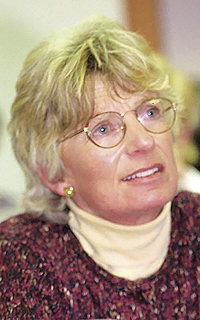With population and development pressures escalating, Blaine County in 2005 launched a massive and contentious effort to curb future growth in the county's rural and environmentally sensitive areas.
Known as the 2025 plan, the process was embraced by those who treasure the county's wildlife, streams and open spaces and vehemently opposed by property owners who's subdivision potential was slashed by the new land-use ordinances. Many threatened to sue.
The plan included more than a half-dozen new ordinances, four of which were approved and became law in July 2006, shortly before the county's moratorium on subdivisions ended. The remaining ordinances were passed in the fall.
"The ordinances build upon more than 30 years of land-use policies that have maintained the rural character of the county," Blaine County Commission Chairwoman Sarah Michael said. "Landowners have experienced meteoric gains in property values as a result of these land-use policies. I believe that the board's actions to contain residential sprawl, preserve agricultural lands, and protect hillsides and other natural resources will ensure our quality of life and will enable landowners to realize higher prices for their property."
Commissioners Michael and Tom Bowman noted that the planning effort was called one of the most aggressive and progressive in the West.
"It's been called a lot more than that," joked County Commissioner Dennis Wright, who represents the south county, where the most significant downzones occurred.
Many in the community verbally attacked Michael and Bowman, referring to them as NIMBY's (Not-In-My-Back-Yard) and cultural elitists who want to shut the door on future growth. But for most opponents the issue really came down to money.
"It really isn't in keeping with what we thought a pluralistic society was about," said Hailey resident Ed Terrazas, who claimed that land he owns near East Fork lost most of its development potential due to the new land-use laws. "If it was your wallet, you would not appreciate it."
Supporters countered that 2025 will retain the character that makes Blaine County such a special place.
"In the long run, the county will be much better off than it otherwise would have been," said Jeremy Fryberger, of Ketchum, a regular attendee of the 2025 hearings.
The issue also crept into the races for two seats on the county commission, with 2025 backers—Michael and Democrat Larry Schoen—proving victorious.
Micky Garcia, an Independent from Ketchum, was challenging the incumbent, Michael, to represent District 3, or the north county.
Schoen was battling Bellevue Republican Dale Ewersen to replace the retiring Wright in District 1.
Ewersen and Garcia both ran on the pro-development, pro-property-rights ticket, which garnered about 40 percent of the county's votes. But much of that may have been driven simply by party ties, as the majority of Republican dominating the south county voted for Ewersen.
"With these guys in charge the economy will be worse because they're battling against development," Garcia said after the election in November. "They claim they're managing growth, but they're really being NIMBY's."
Michael countered that characterizing the 2025 plan as an "anti-development" measure would be inaccurate.
"In fact (2025) will provide more certainty and better projects that will fit the values of the county," Michael said. "It's not at all an anti-growth measure. It ensures that development fits within our values and within our ability to provide services."
Schoen, who owns a farm near Silver Creek and who was named environmental farmer of the year by Coors Brewery in 2003, said his "values reflect the majority view of voters who put quality of life above unrestricted growth and development."
The prospect of conserving the south county's natural resources also bled into a project that would add year-round flows to a 12-mile, seasonally dry stretch of the Big Wood River south of Bellevue.
Known as the Wood River Legacy Project and spearheaded by Rich McIntrye, of Hailey, the project would boost the size of the fishery by 33 percent with no impact on farming and ranching operations. But since it would force a revision of Idaho's entrenched water laws and need the approval of Idaho's Republican-dominated Legislature, many never gave it a chance.
By late September, however, the project was building momentum.
In addition to Blaine County and the cities of Hailey, Ketchum, Sun Valley and Bellevue, the project has garnered conceptual support from agriculture-centric, Republican-leaning Lincoln, Gooding and Jerome counties and the cities of Jerome and Shoshone. The Big Wood and Northside Canal companies have also offered support.
"If this doesn't have strong Republican support, it will go nowhere in the Legislature," McIntyre said.


 Sarah Michael
Sarah Michael



































